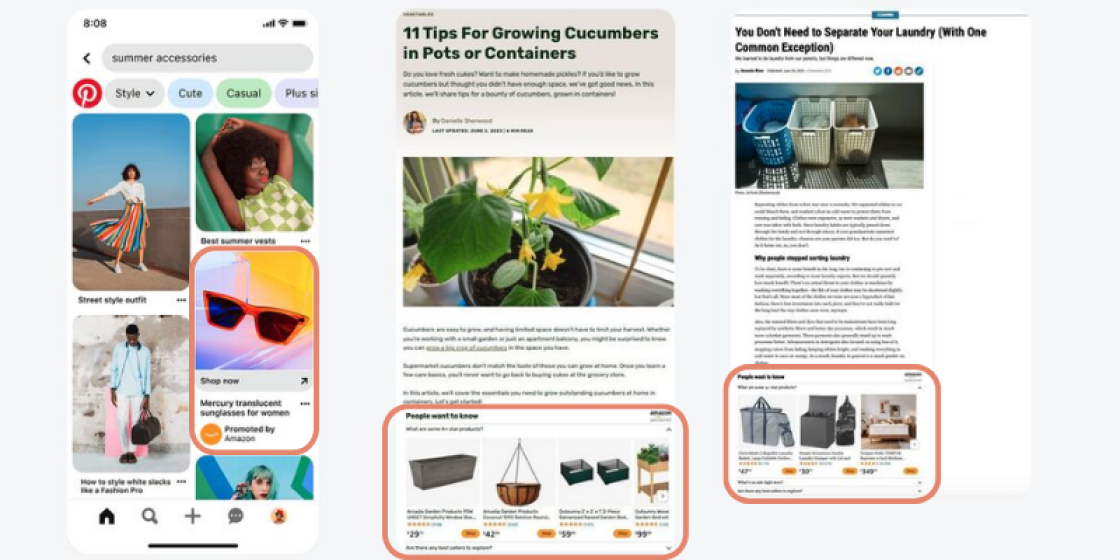Off Amazon Sponsored product Ads
Amazon's recent move to introduce Extended Sponsored Product Ads, an innovative extension of their advertising offerings, has generated a mix of excitement and concerns among advertisers, agencies, and tech providers. This rollout marks a significant development in the Sponsored Products Journey, with a focus on expanding campaigns to premium apps and websites.
What are Extended Sponsored Products Ads?
Extended Sponsored Product Ads signify Amazon's strategic step toward reaching a broader audience base. The roll-out is taking a gradual approach, starting in the US with a select range of premium apps and websites, such as Pinterest, BuzzFeed, Hearst Newspapers, Raptive, and Ziff Davis brands like Lifehacker & Mashable. This initiative aims to extend the reach of Amazon's Sponsored Products by displaying these ads on external platforms, facilitating seamless shopping experiences and harnessing new avenues for growth.
How Does It Work?
Shopper Experience Enhancement:
Customers browsing these external sites will encounter Amazon Sponsored Product Ads displaying trusted attributes such as Prime delivery promise, ratings, and accurate pricing information.
Advertisements are showcased when products are in stock and align with potential customer interest, determined by contextual relevance.
These attributes empower customers to make informed decisions before even clicking on an ad, streamlining the browsing-to-buying process.
Ad clicks lead customers directly to Amazon's product pages, facilitating quick transitions from inspiration to purchase with just a couple of clicks.
Meeting Shopper Needs Off Amazon:
This allows advertisers to cater to shopper needs even when they're not on Amazon's platform, thereby driving more demand and contributing to sales growth.
Ads appear based on item availability and contextual relevance, ensuring customers encounter products that align with their interests.
Measuring Success and Analytics:
Advertisers can access valuable insights by downloading the SP Placement Report available in the Amazon Console reporting centre or via the Amazon Ads API.
The report covers key metrics including impressions, clicks, CPC, spend, sales, ROAS, orders, and units, enabling advertisers to measure the effectiveness of their campaigns.
Pros and Cons:
PRO | CON |
|
|
|
|
|
|
|
|
|
What does this mean for advertisers, agencies and tech providers?
It is likely that the new placements will be successful for some brands, but not for others. The success of the new placements will depend on a number of factors, including the products being advertised, the target audience, and the bidding strategy.
Advertisers will need to carefully consider the pros and cons of the new placements, especially as the early roll-out won’t include chances to optimise or opt-out. They will also need to set budgets carefully and monitor performance closely to avoid budget overruns.
Agencies will need to educate their clients about the new placements and help them to develop strategies for using them effectively.
Tech providers will need to develop tools and solutions that help advertisers and agencies to manage and optimise their off-Amazon Sponsored Products campaigns. They will also need to provide insights into the performance of the new placements so that advertisers can make informed decisions.
Conclusion
Overall, the new off-Amazon Sponsored Products placements are a significant development in the Amazon advertising landscape. They offer brands a new way to reach a wider audience and generate more sales. However, there are also some risks associated with the new placements, so it is important for brands to be aware of the pros and cons to reach the best possible outcome.



